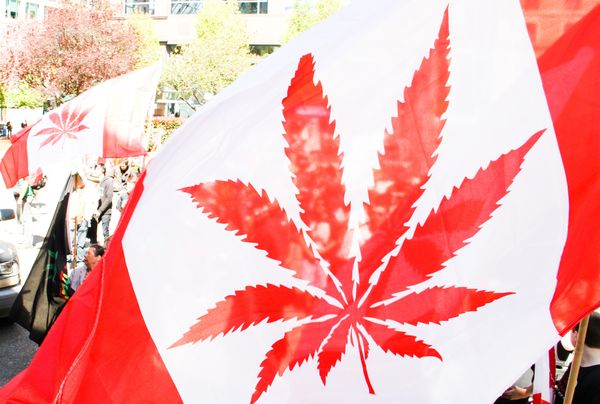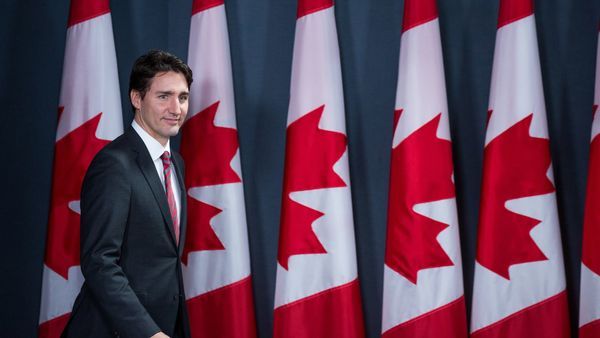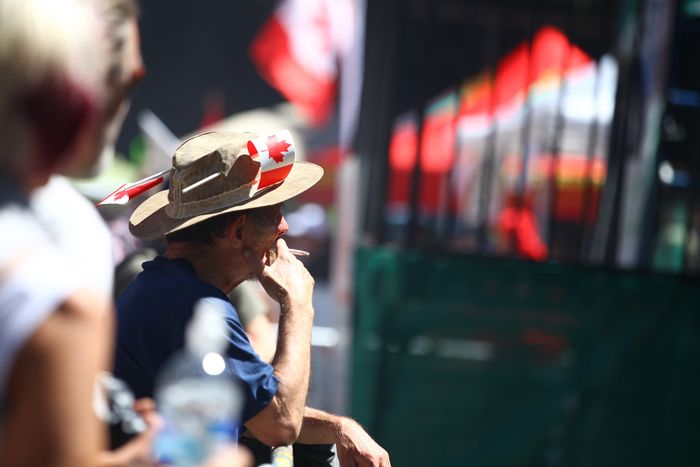- Canada's Prime Minister Justin Trudeau had called for cannabis regulation as one of its priority proposals since before he came to power. Last year, his government announced that it had begun to work on reforming legislation and at the end of November the Task Force on Cannabis Legalization and Regulation published guidelines and recommendations for the development of measures.
- However, the process is developing more slowly than expected. The executive anticipated that the new regulation would be ready in the spring of 2017, but everything seems to indicate that Canadians will still have to wait a couple of years to legally consume, cultivate and sell cannabis for recreational purposes.

Liberal Justin Trudeau made clear his intentions to legalise marijuana, both medical and recreational, even before he came to power. Contrary to what often happens with other politicians, once the prime minister was appointed, he did begin to take the first steps to fulfil his promise: in April last year, Health Minister Hame Philpott, announced that they had begun work to make it a reality. They predicted then that the measures would be ready to be implemented in the spring of this year.
If any Canadian consumer, activist, grower, distributor of cannabis or any related product thought this was a long wait, the pace at which the process is developping suggests that they will have to arm themselves with patience. Most likely no substantial change will be seen this year, next year or even in early 2019. The reasons behind this delay are essentially practical.
collaboration between governments, experts, distributors and the public is critical to the success of the new system
Translating the guidelines reflected in the report of the Task Force on Cannabis Legalization and Regulation, released last November to the reality of a country with the extension and relevance of Canada is not a simple process. The team, made up of nine volunteer experts, had analysed health and safety issues to draft more than 80 recommendations that were delivered to the Ministers of Justice, Health, Public Safety and the State Attorney General in early December.
The Group's leader, Anne McLellan expressed, her hope that the document would serve to lay the foundations of a new regulatory system and warned that "collaboration between governments, experts, distributors and the public is critical to the success of the new system". McLellan, who has served as Minister of Health, Justice and Public Security in previous legislatures, knew that the adoption of her plan required radical ideological change for politicians, forces of law and order and citizens.

Some of the possible obstacles to the implementation of the new regulation are imposed by the territorial organization and the division of powers between the different Canadian provinces, so the regional and federal administrations must agree to make cannabis legalisation effective. The need for a consensus among all parties could delay the establishment of a true cannabis industry more than in other apparently simpler jurisdictions, such as Colorado and Washington, the first two US states to legalise recreational use of cannabis by popular vote .
Their voters approved two initiatives to accept the use of cannabis by adults in 2012, asking for January 2014 to be the deadline for its implementation. Their leaders decided to give cannabis entrepreneurs freedom to carry out their activity legally, but they encountered some initial problems: the explosion of businesses related to sale and distribution vs the limited number of licenses, along with the regulation of the different products derived from cannabis and the separation of the recreational and medicinal sectors, made the development of the economic fabric around marijuana very difficult.
Background and expectations
In Canada, regularisation of medical cannabis consumption is not new: it was the first country in the world to set up a government program for its therapeutic administration to chronic or terminal patients. The system, however, has undergone some changes. At the end of 2013, at the initiative of the previous government, the conservative Stephen Harper, the state stopped producing marijuana and the market was opened to private companies, which had to meet certain requirements and obtain the corresponding license. Also, a formal request to Ottawa was no longer necessary: a document issued by the doctor for patients to buy their treatment was enough, but they were not allowed to cultivate at home.
These new measures, which came into force in March of the following year, were a blow to users who had their own crops. A situation that was reversed thanks to a group of home growers who took the case to the courts: the Federal Court ruled in their favour and amended the law to legalise self-cultivation.
In the case of recreational use, the exact measures that the executive will be implementing are not yet known, but Canadian provincial governments will have the power to regulate cannabis cultivation and the right to establish stricter measures and standards in the lower echelons of the supply chain. In addition, they will be able to approve the demands imposed by producers who denounce inefficiencies in the system and conflicts between the distributors of medical cannabis and the establishments focused in its sale for leisure purposes.

Thus, provinces and territories will regulate cannabis distribution for recreational purposes and will establish the rules and regulatory framework for the period after legalisation. But they still have to wait for the federal government to introduce the global regulation promised by spring 2017. And, anyway, they cannot go much further beyond setting the first guidelines. It is very unlikely that any bills will be approved before autumn this year, when provinces will have to present their own initiatives to complement the legislation.
One of the issues that are on the table once again at the provincial level is the decision to allow private companies to take over, restrict distribution to government-controlled establishments, or to focus laws towards favouring large corporations only.
Following the US example
Canada is now in the situation where Colorado and Washington were in November 2012, when they had just passed the legalisation of cannabis for recreational purposes. Adapting the times to the Canadian reality, estimates suggest that we will have to wait until 2019 for companies in the marijuana sector to be able to apply for activity licenses and start their businesses freely. A period that could even fall short, given the long road ahead and the possibility for the executive to delay the process or lengthen the deadlines even more.
In fact, McLellan herself warned at the beginning of the process of the need to go slowly in the reform of the laws on the use of cannabis. The leader of the Task Force on Cannabis Legalization and Regulation explained in an interview one of the lessons learned from other cases: "It is better to take your time because it's much harder to pull something back than it is to perhaps be a little bit more restrictive out of the box and then, as you learn, you maybe loosen things up a bit." As you can see, Canadians will have to arm themselves with patience until they see that cannabis is completely legal in their country, and under what conditions.
The Task Force: 10 separate recommendations for the federal government of Canada
- Require all cannabis products to include labels identifying levels of THC and CBD.
- A limit of four plants per residence.
- A maximum height limit of 100 cm on the plants.
- A prohibition on dangerous manufacturing processes.
- Reasonable security measures to prevent theft and youth access.
- A limit of 30 grams be implemented for the personal possession of non-medical dried cannabis in public.
- Develop strategies to encourage consumption of less potent cannabis, including a price and tax scheme based on potency to discourage purchase of high-potency products.
- Apply comprehensive restrictions to the advertising and promotion of cannabis and related merchandise by any means, including sponsorship, endorsements and branding, similar to the restrictions on promotion of tobacco products.
- Prohibit mixed products, for example cannabis-infused alcoholic beverages or cannabis products with tobacco, nicotine or caffeine.
- Work with provincial and territorial governments to determine a tax regime that includes equitable distribution of revenues.



Comments from our readers
There are no comments yet. Would you like to be the first?
Leave a comment!Did you like this post?
Your opinion about our seeds is very important to us and can help other users a lot (your email address won't be made public).